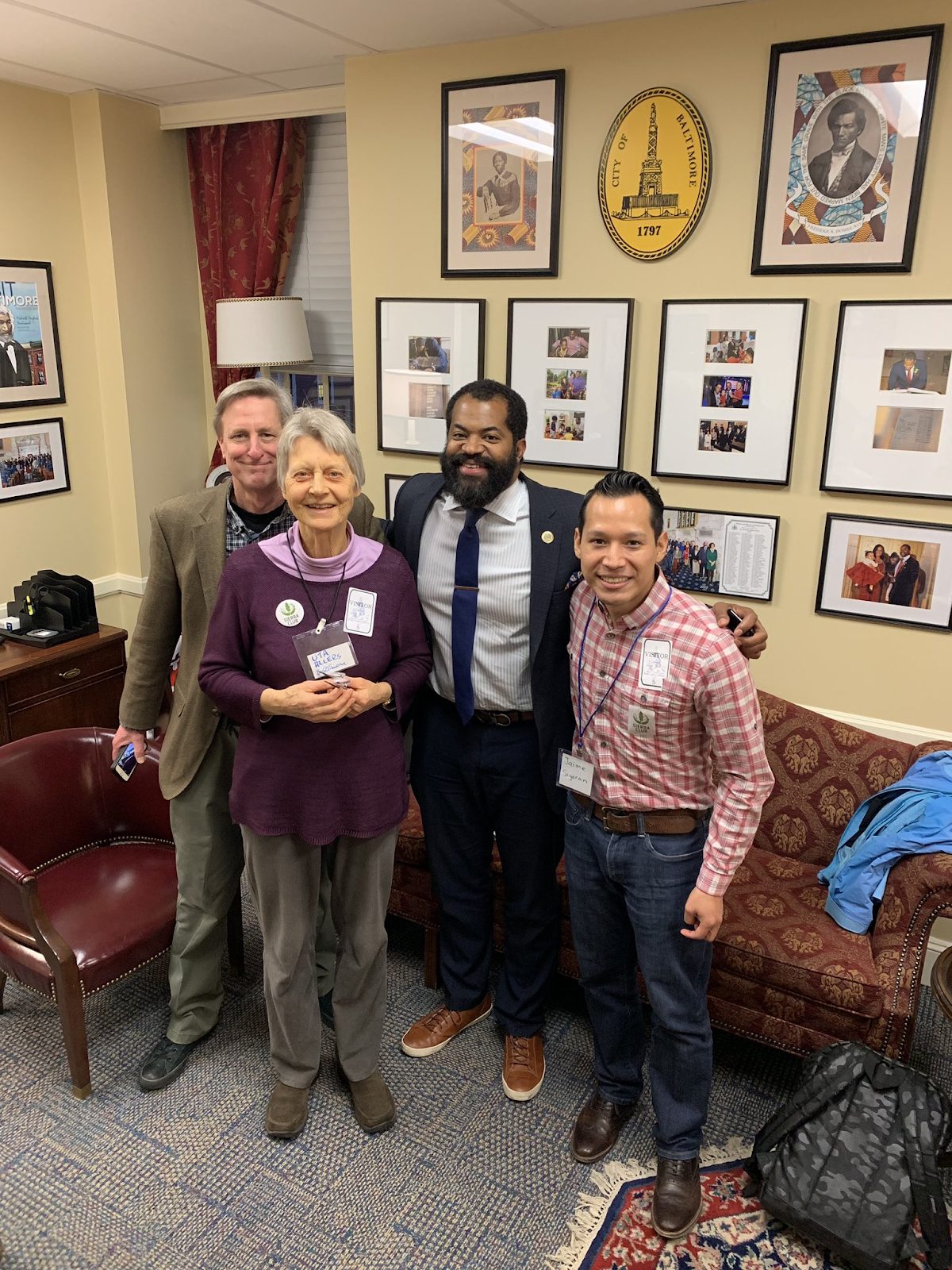
Baltimore City Delegate Nick Mosby meeting with Sierra Club members from his district on his legislation (HB 961) to remove subsidies for trash burning form the Renewable Portfolio Standard (RPS)
In 2011, Maryland passed Senate Bill 690 - becoming the first state to consider trash incineration and the burning of woody biomass, a Tier 1 energy resource. In terms of the Renewable Energy Portfolio Standard (RPS), this put burning trash on the same level as clean, non-polluting wind and solar. The RPS was enacted to invest in clean energy solutions, to fight climate change, and reduce pollution of our air and water. Yet millions of ratepayer dollars in subsidies have been handed to dirty trash incinerators, in particular the Wheelabrator and Covanta incinerators in Baltimore City and Montgomery County.
In order to generate the same amount of energy as a coal-fired power plant, trash incinerators release 28 times more dioxin, 2.5 times as much carbon dioxide (CO2), and 2 times as much carbon monoxide.
On its’ own, the Wheelabrator facility in downtown Baltimore is the source of 93% of the city’s mercury pollution and 78% of the lead - both known to be dangerous to the neurological development of children. It is also the single largest source of pollutants that cause respiratory disease - producing over 80% of the sulfur dioxide and more than 57% of the nitrogen oxides. Sulfur dioxide triggers acute respiratory irritation, causing immediate worsening for anyone with an underlying pulmonary disorder like COPD. Nitrogen oxides are a known cause of asthma attacks. According to EPA data, each year, 120 pounds of lead, 60 pounds of mercury, 99 tons of hydrochloric acid, and 2 tons of formaldehyde are produced by Wheelabrator.
For the predominantly African-American communities in Cherry Hill, Curtis Bay, and Brooklyn of South Baltimore, these effects are very real. The average life expectancies for babies born in neighborhoods surrounding the incinerator are less than 70, a decade less than the statewide average. In the neighboring community of Westport, the residents are more than twice as likely to die of lung cancer than North Baltimorean residents in Guilford or Homeland. While it’s difficult to pinpoint the cause of illness, local groups believe that the incinerator is affecting the communities’ health.
Montgomery County experiences the burden of air pollution from their Covanta incinerator as well. As the largest polluter in the county, the 22- year old trash incinerator burns an average of 570,000 tons of trash per year, turning it into 390,000 tons of air pollution and 180,000 tons of toxic ash that is dumped in Virginia landfills.
We can turn this around - on March 8th at 1pm, Maryland’s House Economic Matters Committee will hold a hearing on House Bill 961 by Delegate Nick Mosby. This is a bipartisan initiative to demote dirty trash incineration from its’ Tier 1 status and put those subsidies back towards real climate solutions. Senator Michael Hough is the lead sponsor in the State Senate. Join us in Annapolis on Friday, March 8th at 10:30 a.m. and speak out to stop subsidizing pollution. Tell your legislators: no more cash for burning trash!